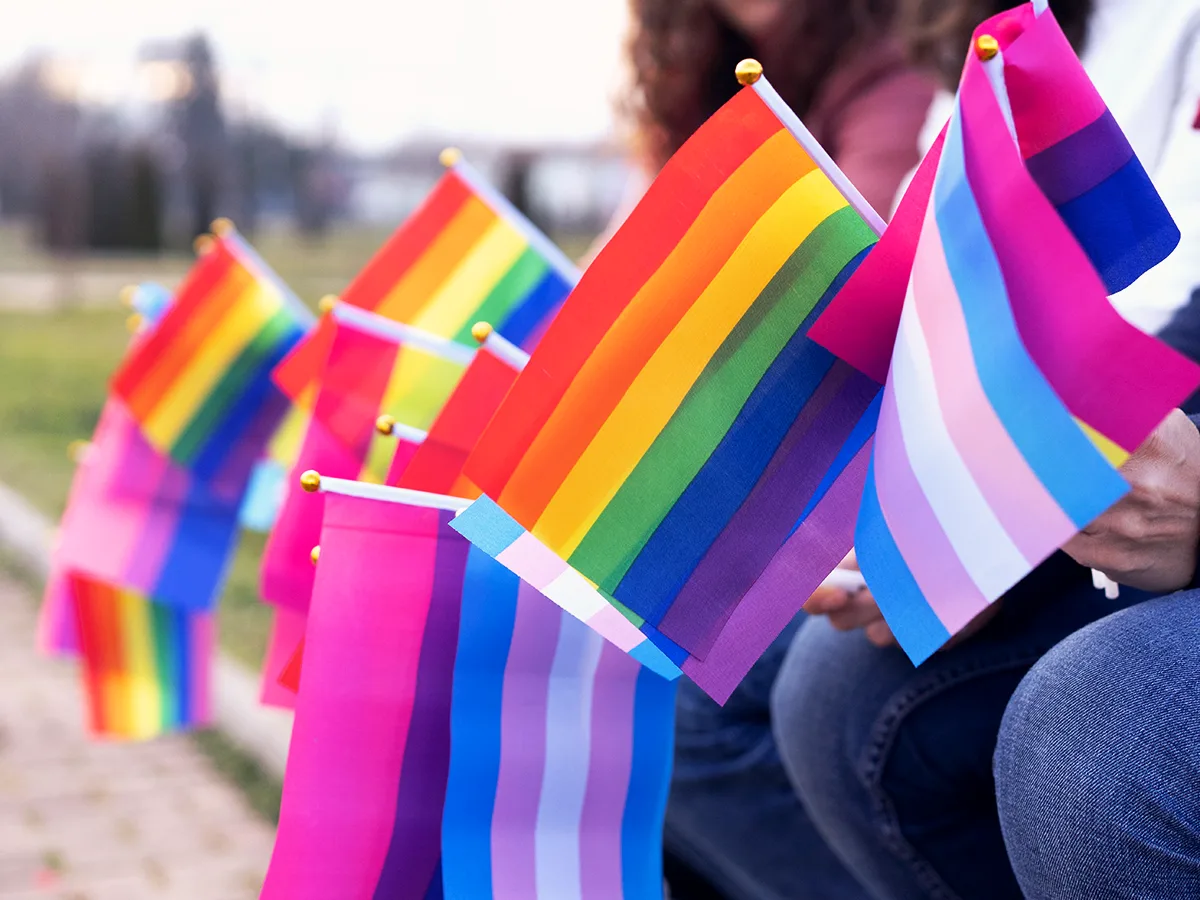3 tips for talking to kids with ADHD who are discovering their queer identity

Updated June 1, 2023

At a glance
Young people with ADHD may also identify on the LGBTQIA+ spectrum.
Planning ahead can help you to talk with your child about gender, sexuality, and neurodivergence.
Kids with ADHD may benefit from visual tools during these conversations.
Many people — young and old — who learn and think differently also identify somewhere on the LGBTQIA+ spectrum. This intersection of identities can be a lot to manage, especially for kids. They might feel more isolated by having two “labels.” Or they might be bullied for their differences.
As a queer, nonbinary, neurodivergent human, I was bullied throughout school. Now I create training programs to ensure that every child is included in their community.
It’s important for you and your child to talk about the unique challenges — and strengths — of being queer and neurodivergent. But before you can do that, you first need to be comfortable talking about the fluidity of gender and sexuality.
Here are three ways that you can talk with your child, support them, and be their ally.
1. Learn about the lived experiences of queer, neurodivergent people.
As an adult in your child’s life, you need to be prepared to talk with your child about their identities. Think of it in a similar way to how you prepared to talk with your child about learning and thinking differences. You may have had to educate yourself, especially if ADHD was new to you. The same thing applies here.
Talk with other families who have queer kids with ADHD. You can find families who are having similar experiences through organizations like PFLAG.
It can also help to read, watch, or listen to content created by neurodivergent and queer people and organizations. Look for content that focuses on the joy and strengths of neurodivergence, genders, and sexualities.
You can also look for content that’s aimed at kids or adolescents and share it with your child. You might say, “I’ve been reading personal stories online by queer people with ADHD. I’m learning how their neurodivergence and gender show up in their lives. Would you like to look with me?”
2. Talk about gender and sexuality with your child when they’re ready.
You may want to jump right in and support your child. But it’s best to let your child take the lead. Don’t push, but make sure your child knows the door is open whenever they feel ready. For example, you could say, “I’m looking forward to talking to you about your gender and/or sexuality, but there’s no rush. I’ve been learning from others who identify as queer and neurodivergent. I’m here whenever you’re ready to talk.”
Kids with ADHD can benefit from having visuals to guide the conversation. Try exploring the Gender Unicorn together, a tool for understanding gender and sexuality. You can print out a copy for each of you. Each person can note where they fall on the gender and sexuality spectrum.
Ask your child which words they want you to use when talking about them and their gender or sexuality. Let them know that it’s OK to change their mind as they learn more. You might ask, “What words feel good for me to use right now? If you aren’t sure yet, that’s OK. We can keep learning. You get to decide when and how we will talk about it.”
3. Be patient and flexible.
Conversations like these take a lot of emotional work and vulnerability — from you and from your child. Kids with ADHD tend to feel emotions more intensely. The emotions also last longer and can get in the way of everyday life. If your child has a hard time managing their emotions, acknowledge how they seem to be feeling. Give them time to calm down if they need it.
If your child is ready to talk with other people about their gender and sexuality, take it one person at a time. Your child may feel differently about telling different people. They may only want certain people to know. They may want to tell some people by themselves. Or they want you to tell people for them. Be understanding if your child changes their mind, and follow their lead.
Be flexible with pronouns, too. Your child may change their pronouns or where they want them used from day to day or week to week. For example, they may want to use their pronouns at the doctor’s office. But they might not want you to use them when talking to your friends. Ask if you’re not sure.
Talking about these identities will help your child feel more seen and confident about exploring who they are. And once you’re comfortable talking about this together, you can talk about the challenges and strengths that come with being queer and neurodivergent.
Feel free to have these conversations, including exploring the Gender Unicorn, with all of your family members. Having these talks together can help normalize identities and take the focus away from your child being different. Plus, we all benefit from learning about ourselves and each other.
Looking for more resources to support your child?
Find out how to help kids build self-advocacy skills.
Learn what to do if your child is being bullied.
Read a personal story about growing up queer and neurodivergent.
Key takeaways
It’s important for you and your child to be comfortable talking about gender and sexuality together.
These conversations take a lot of emotional work, patience, and flexibility.
Talking about gender and sexuality can help your child feel confident and less alone.

